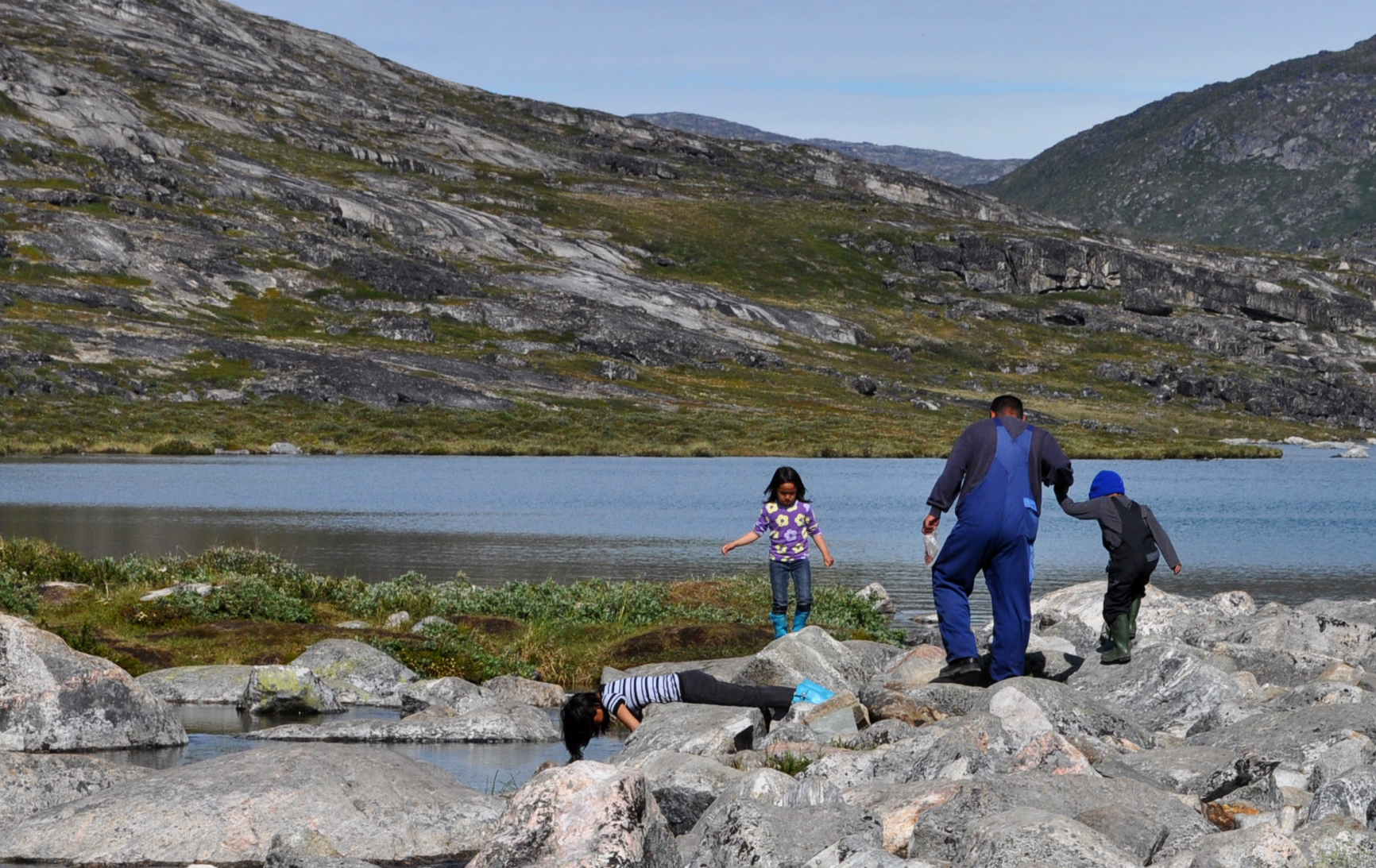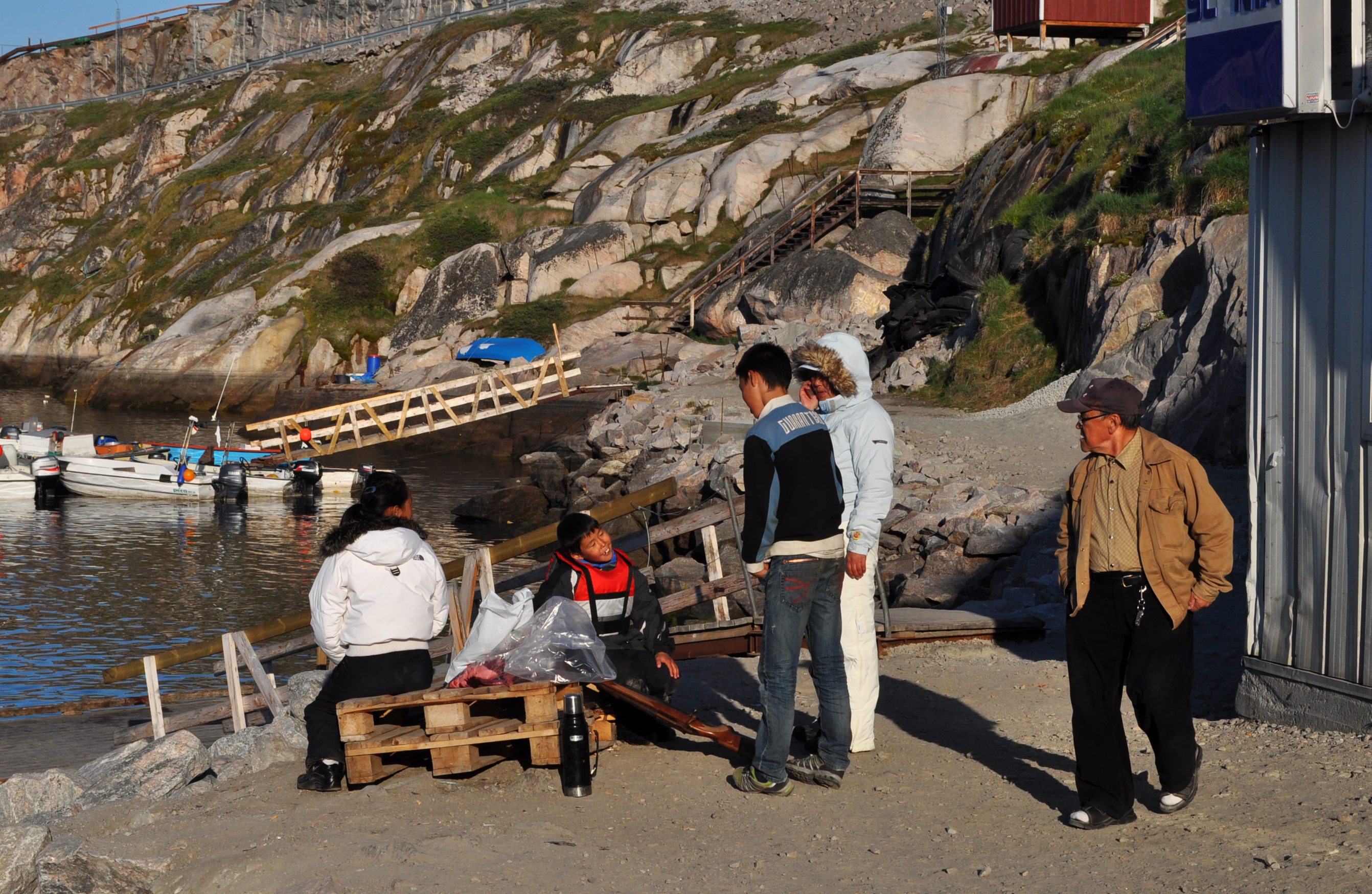Children in Greenland are getting taller and healthier
Greenlandic children once lagged behind their Danish counterparts in height and other measures, but that gap has been mostly erased.

A group of children runs down the hill towards the Knud Rasmussen’s museum in Ilulissat, Greenland. To a casual observer it might not be obvious, but to a researcher who is revisiting Greenland after many years, it is immediately clear: The children appear taller — at least compared with previous generations.
This observation is not exclusive to Ilulissat. We observed the same phenomenon in Nuuk, the capital of Greenland, and in other towns and settlements throughout the country. The days when Greenlandic children were characterized by stunted height are gone. And this is the conclusion of our recent study, which documents the height and weight of Greenlandic children.
Previously, Inuit, the indigenous people of Greenland, Northern Canada and parts of Alaska, were characterised with a specific growth pattern: Compared with their European or continental U.S. peers, they were found to be shorter but of a similar weight.
In a study from 1996 to 1997, Greenlandic men and women were found to be on average 5 cm and 7 cm shorter, respectively, than men and women in Denmark (the two nations are part of the wider Kingdom of Denmark). But this is no longer the case.
In Greenlandic homes and communities, people have been aware of this trend for some time, but it is only now that some of their observations have been scientifically documented.
Studied growth patterns until puberty
In total, 279 boys and girls from Nuuk and Ilulissat, the third-largest town in Greenland, participated in the study.
We obtained repeated measurements of their height, weight and head circumference from birth until the age of 10 from medical records and the records of visiting nurses. This data was used to estimate growth patterns for the average Greenlandic child from birth until puberty, which is around the age of eight for girls and nine for boys.
Compared with data from Denmark, (last updated in 2014), we showed that Greenlandic boys and girls are heavier, and almost as tall as Danish children — at least until they reach puberty, where our data collection so far has stopped.
From here, we estimated growth curves of height, weight, body mass index, and head circumference for Greenlandic boys and girls, which visualizes how the children grow, on average. Doctors and visiting nurses use these charts to examine the growth of children.
Monitoring changes in the growth of a child might indicate a failure to thrive or some kind of disease that must be examined further. Previously, growth curves from Denmark have been used in Greenland, but now it is possible to use Greenlandic growth curves as a supplement.

Greenlandic babies are getting bigger
And now, the new Greenlandic growth curves show that during their first year of life, boys and girls in Greenland are taller than Danish children. By the age of one, Greenlandic boys are on average 77.9 cm tall while the average Danish boy has reached 77 cm.
We see the same difference in girls. On average, girls in Greenland and Denmark are 76 cm and 75 cm tall, respectively, by their first birthday. This indicates that part of the explanation for the changing growth pattern in Greenlandic children is to be found early on, during the fetal phase.
It is well known that obese mothers give birth to larger children, even if the mothers themselves were not obese during childhood. In our study, of the 279 Greenlandic boys and girls a large number of their mothers were actually obese during pregnancy. Many of the pregnant mothers also smoked. Smokers tend to give birth to smaller children, but our study indicated that obesity had a stronger effect than smoking when it came to the size of the Greenlandic children during their first year of life.
Another explanation for the increased height, weight and head circumference of Greenlandic children might be genetic admixture with Caucasians. This has become so widespread that now 27 percent of the modern Inuit genome in Greenland is typically of Scandinavian origin.
Greenlanders are becoming healthier
However, genes and changing fetal conditions alone cannot explain the changing growth pattern of Greenlandic children.
As in many other countries, living conditions in Greenland have improved in recent decades, nutrition has improved, and so has general health in the country.
In a 2016 study of the burden of diseases and the use of healthcare facilities for Greenlandic children, we found that, on average, Greenlandic children made fewer visits to the doctor than Danish children and the pattern of diseases was quite similar in both countries.
The general health of Greenlandic children today appears to be as good as that among Danish children, if not better.
Significantly, the burden of severe and chronic diseases is no longer higher in Greenland.
Chronic diseases, such as tuberculosis, were for many years more prevalent in Greenland than in Denmark. And these types of chronic diseases could hamper growth. However, none of the 279 participating boys and girl suffered from such diseases.
This could partially explain why boys and girls in Greenland now almost keep up with the growth of Danish children. At the age of eight, a Greenlandic boy can expect to be 130 cm tall on average, while a Danish boy of the same age will have reached 131.8 cm. In comparison, eight-year-old Greenlandic and Danish girls will be on average 129.4 cm and 130 cm tall, respectively.
So far, we have studied growth patterns up until puberty, but we still need to evaluate growth patterns among Greenlandic teenagers. Doubtless, this will be the focus of further studies.
This article is co-published with ScienceNordic and in Danish on ForskerZonen.
Henrik Thybo Christesen is a clinical professor at the University of Southern Denmark and Marius Kløvgaard is an MD and PhD student at the University of Southern Denmark.
This article was originally published on The Conversation. Read the original article.
The views expressed here are the writer’s and are not necessarily endorsed by ArcticToday, which welcomes a broad range of viewpoints. To submit a piece for consideration, email commentary (at) arctictoday.com.